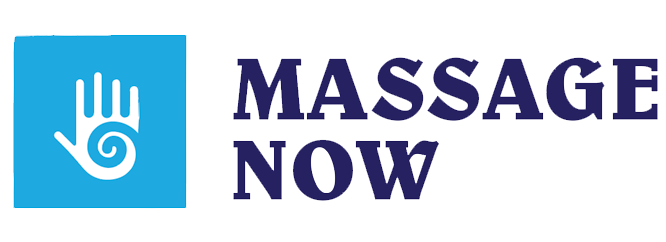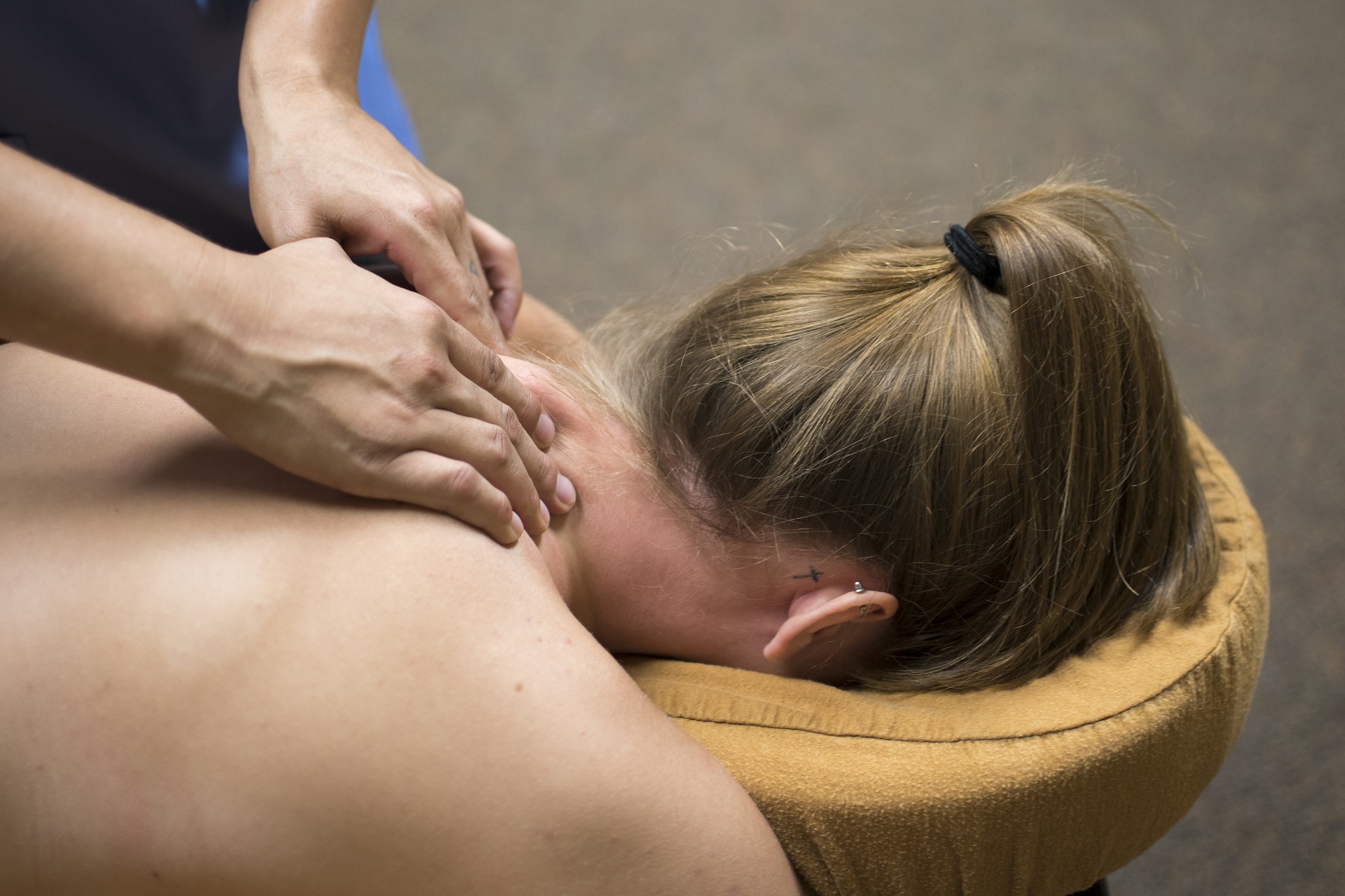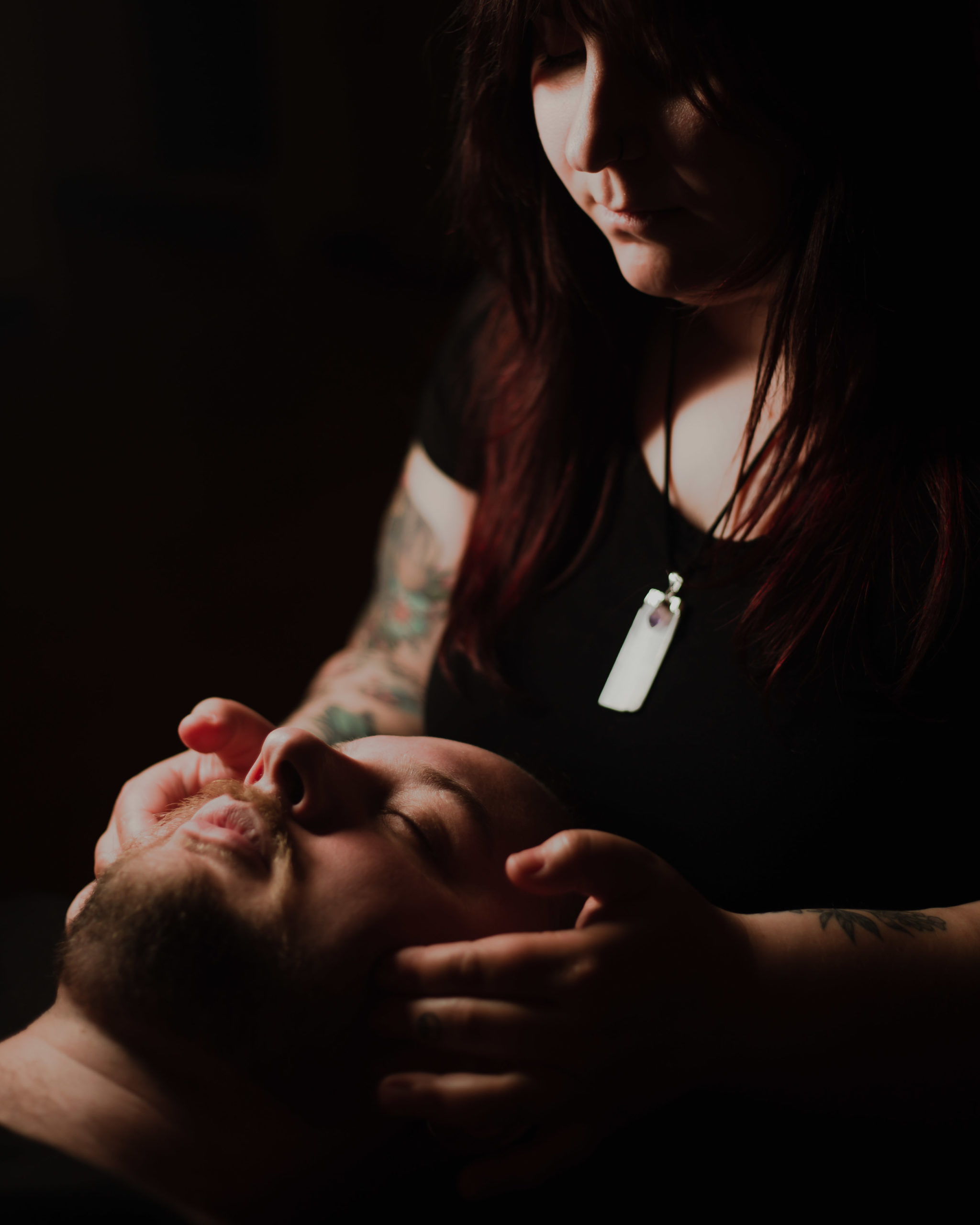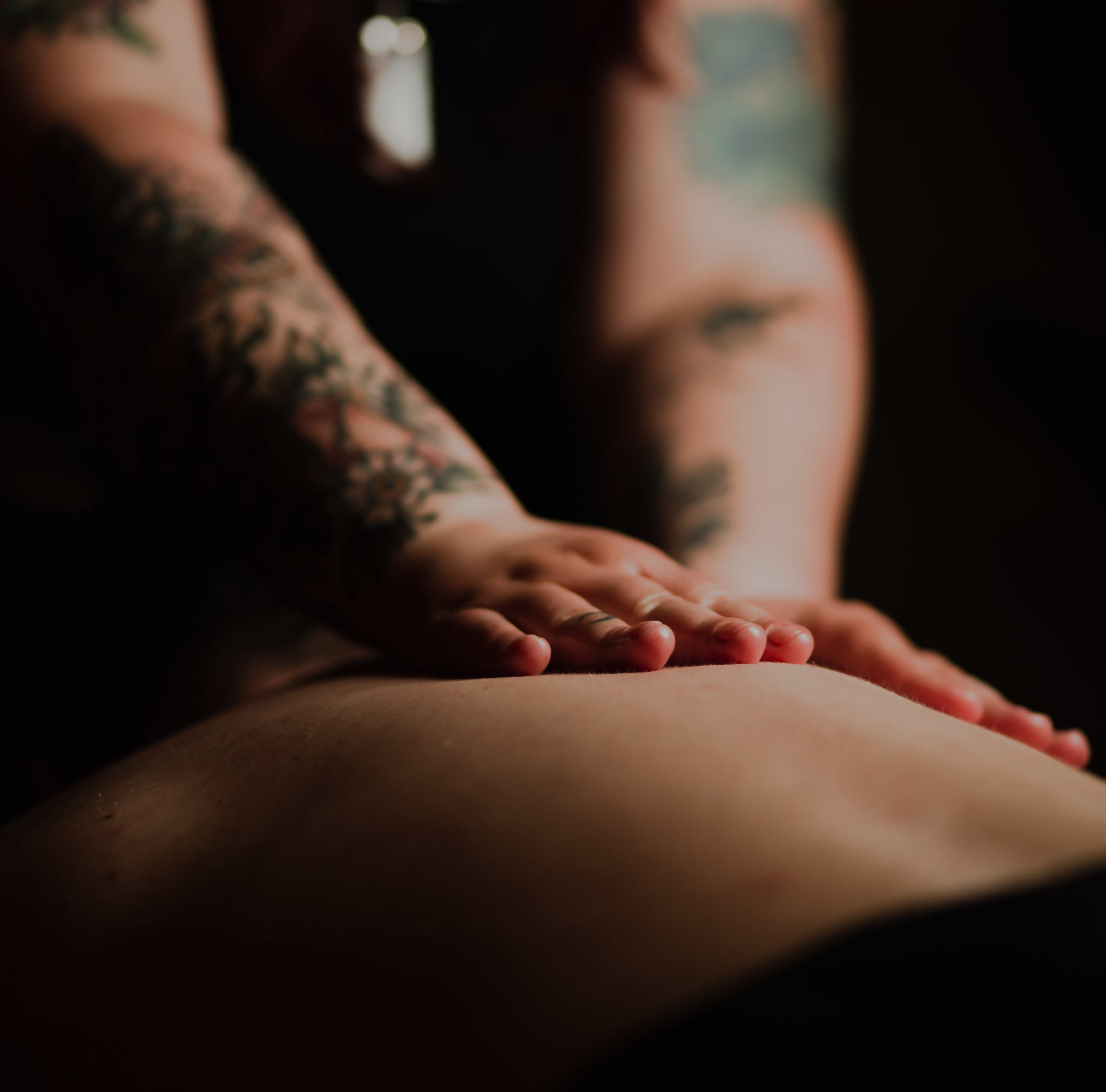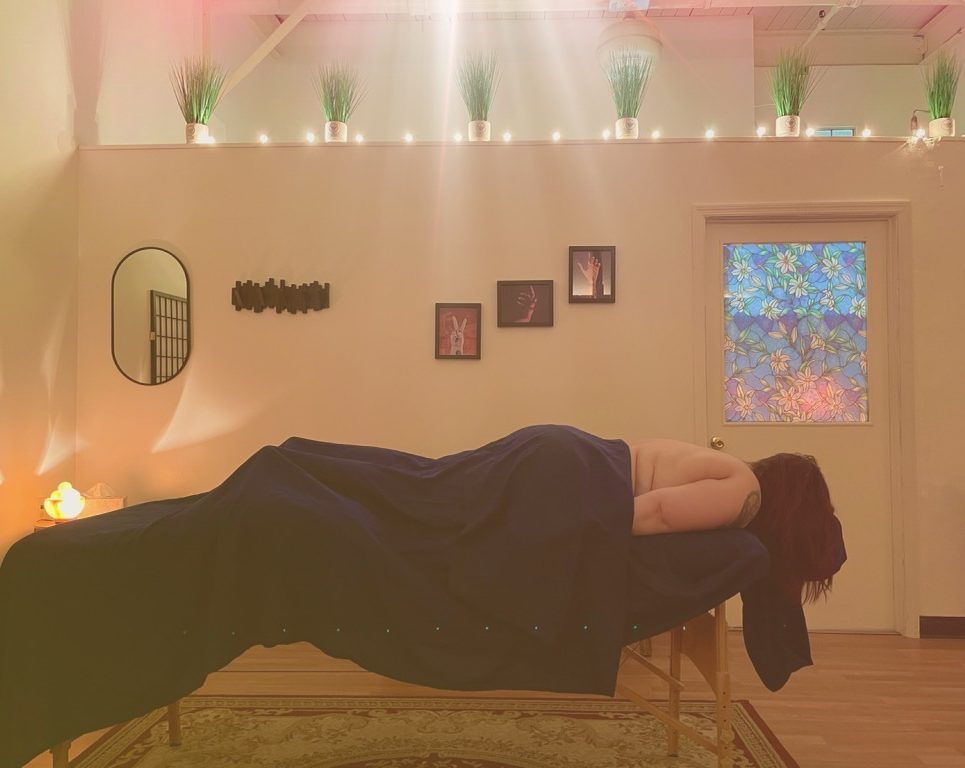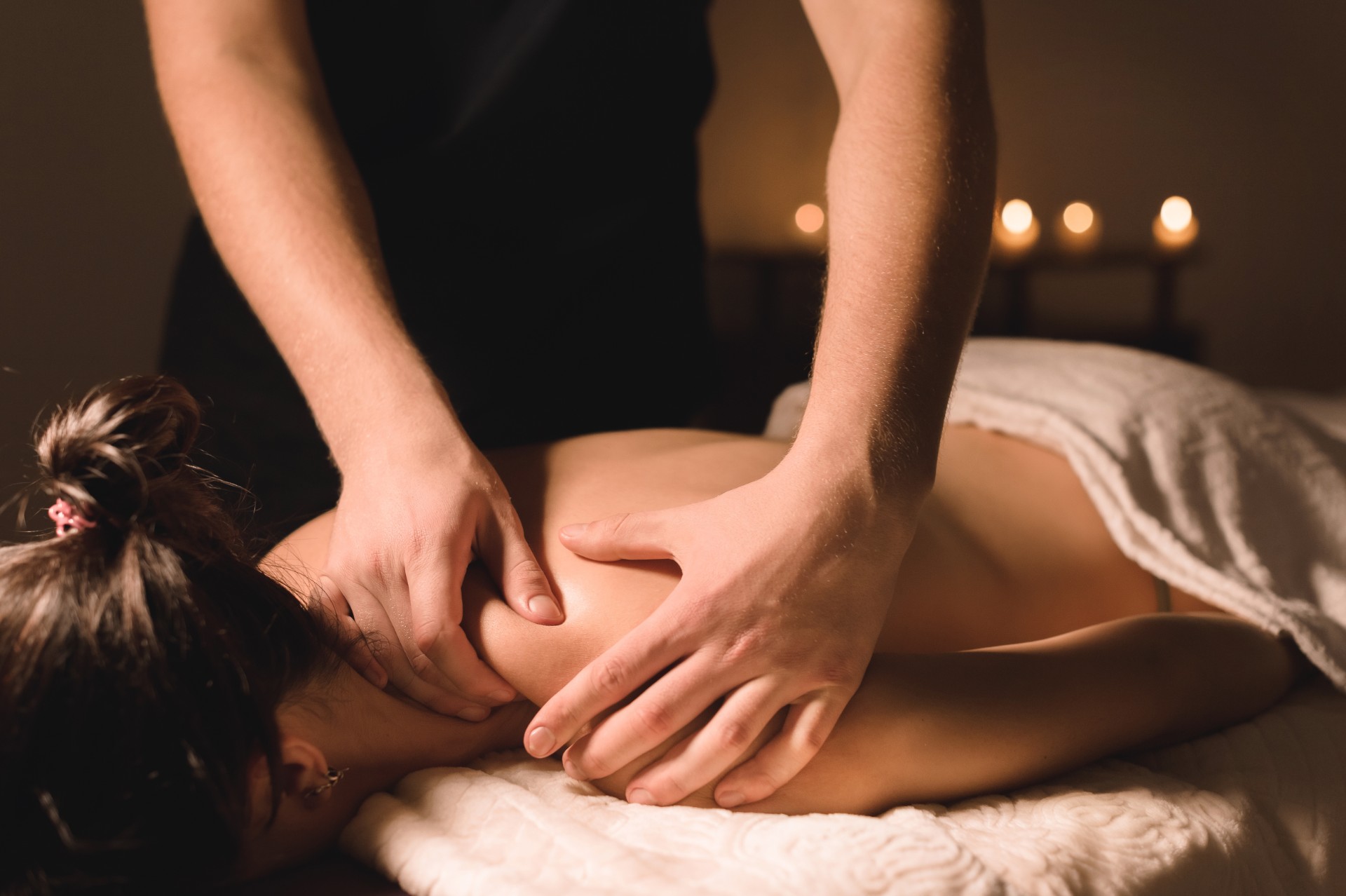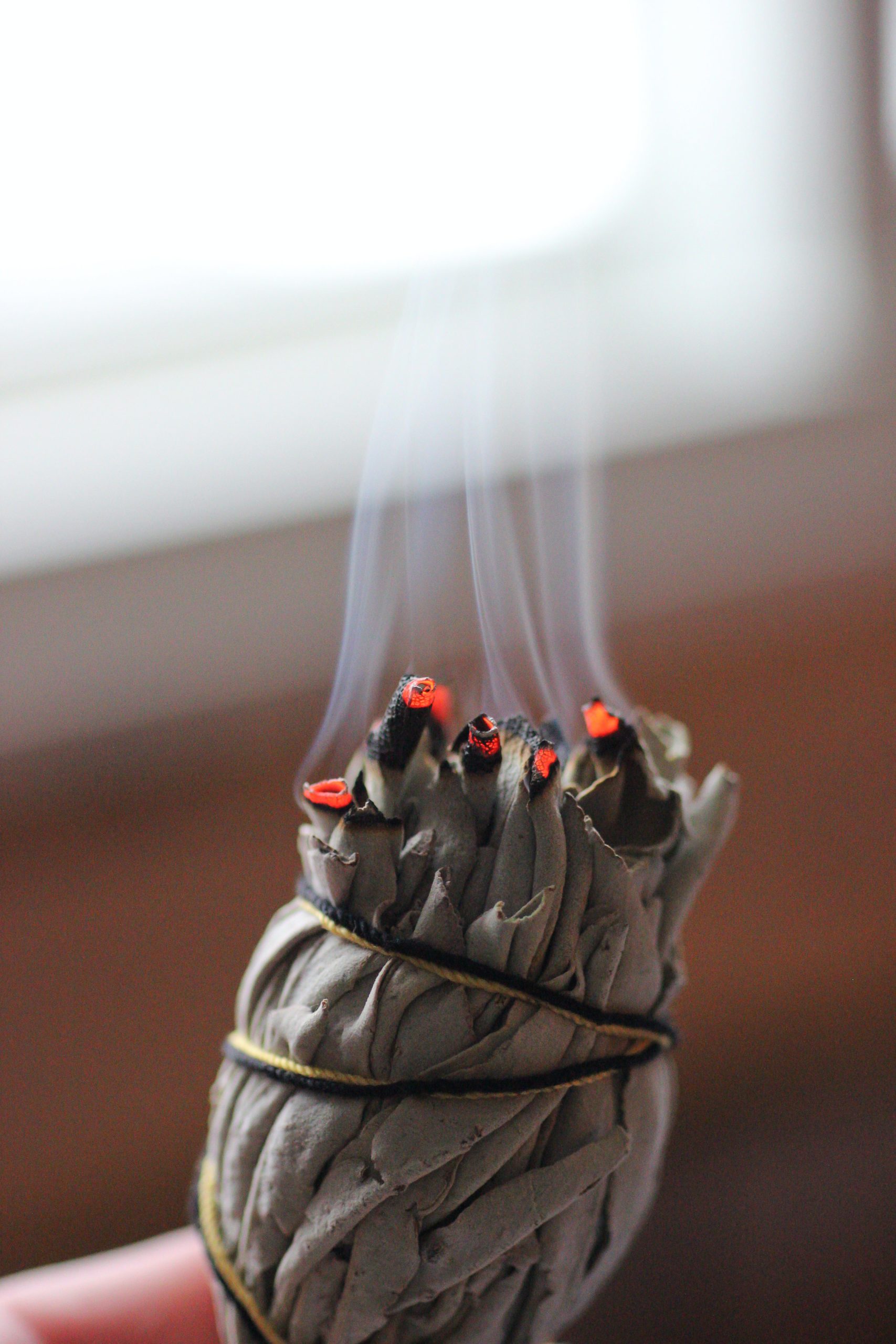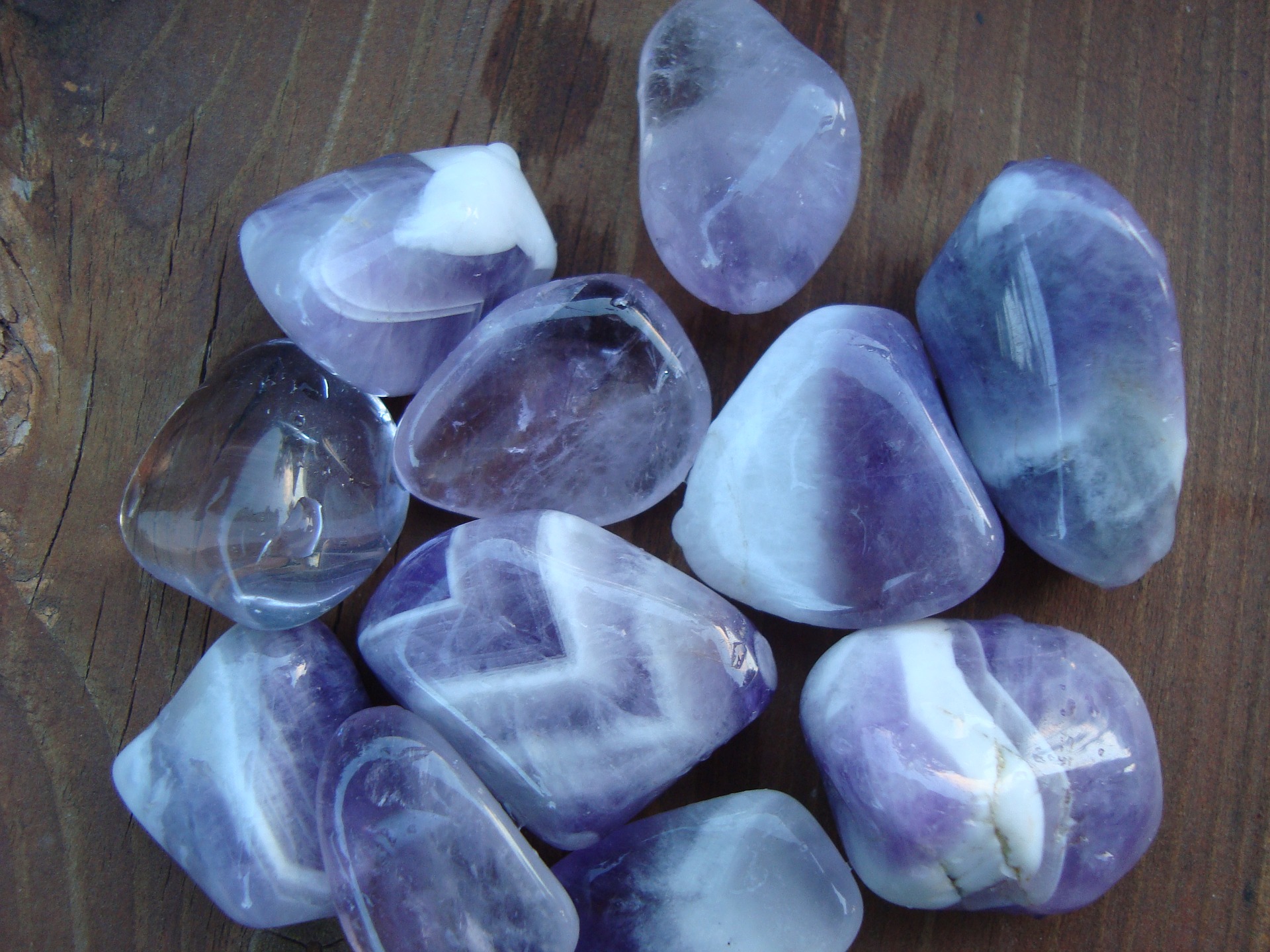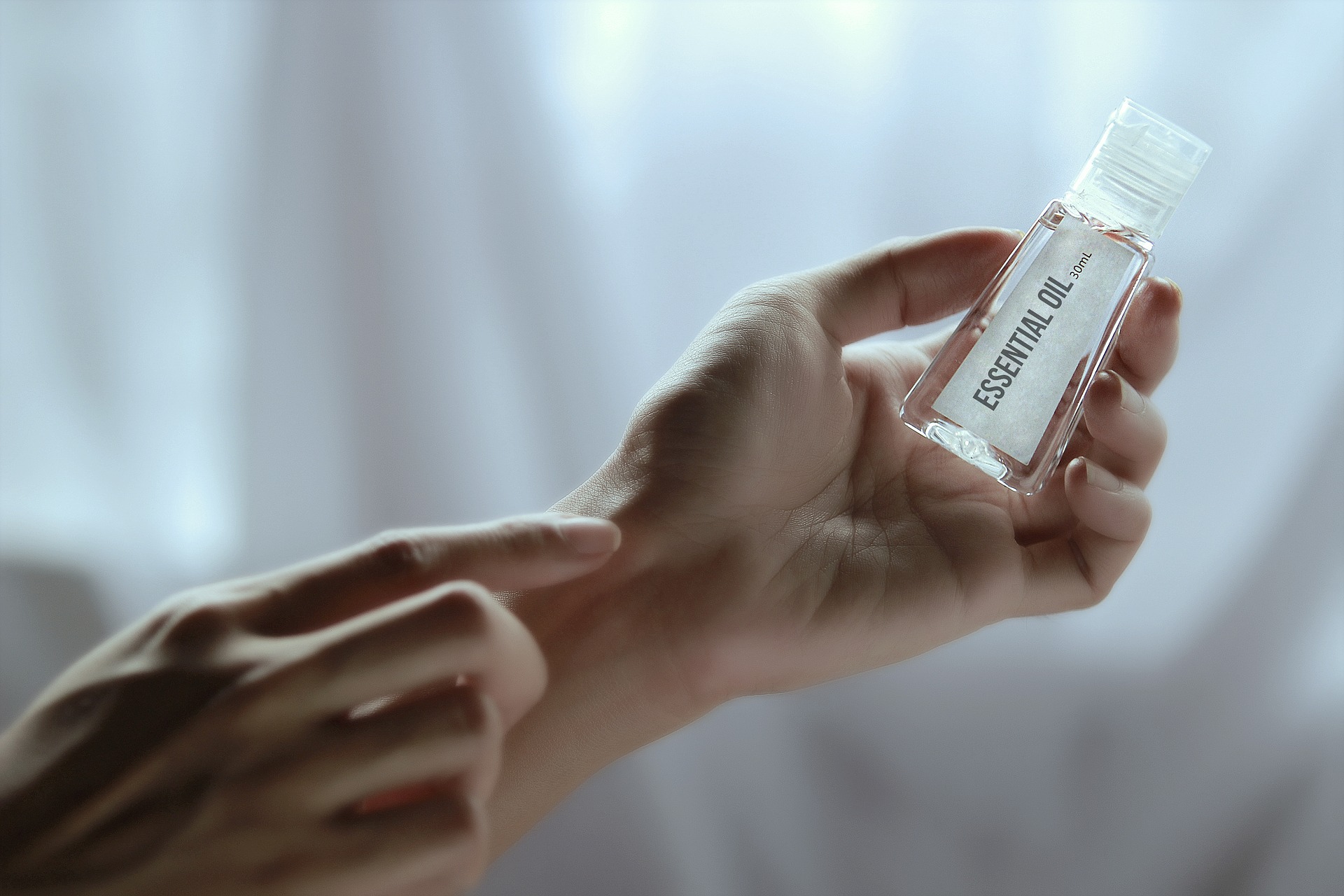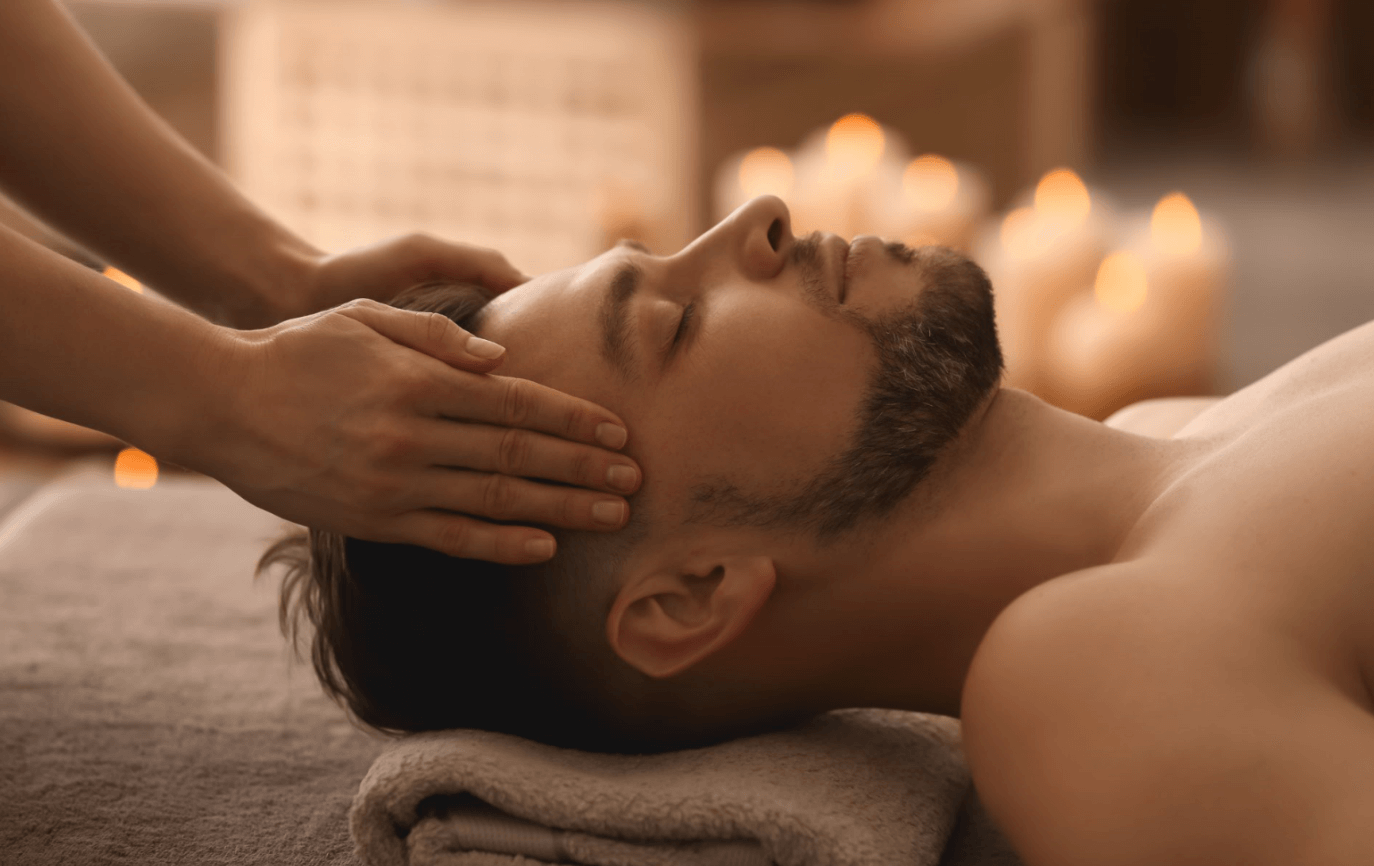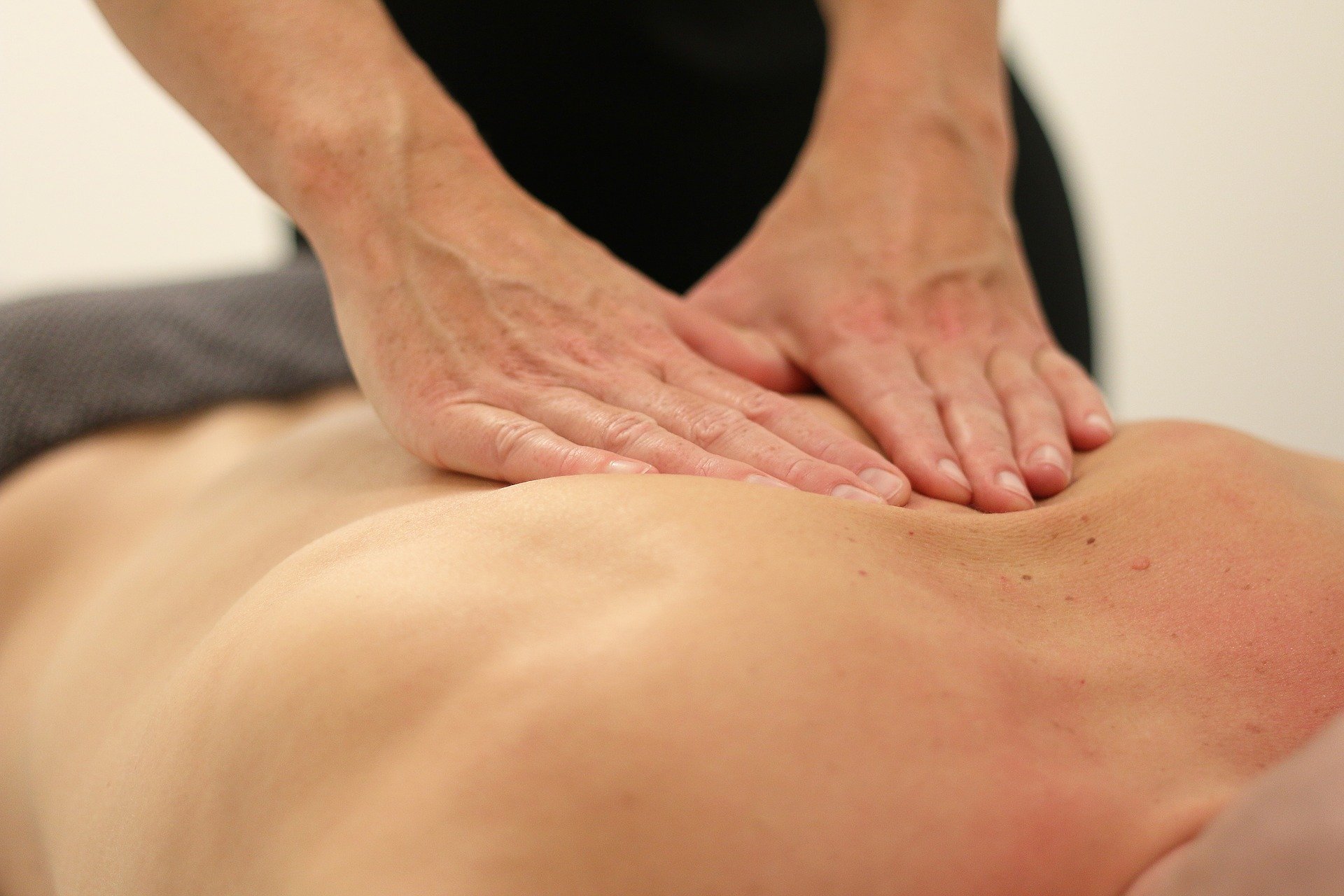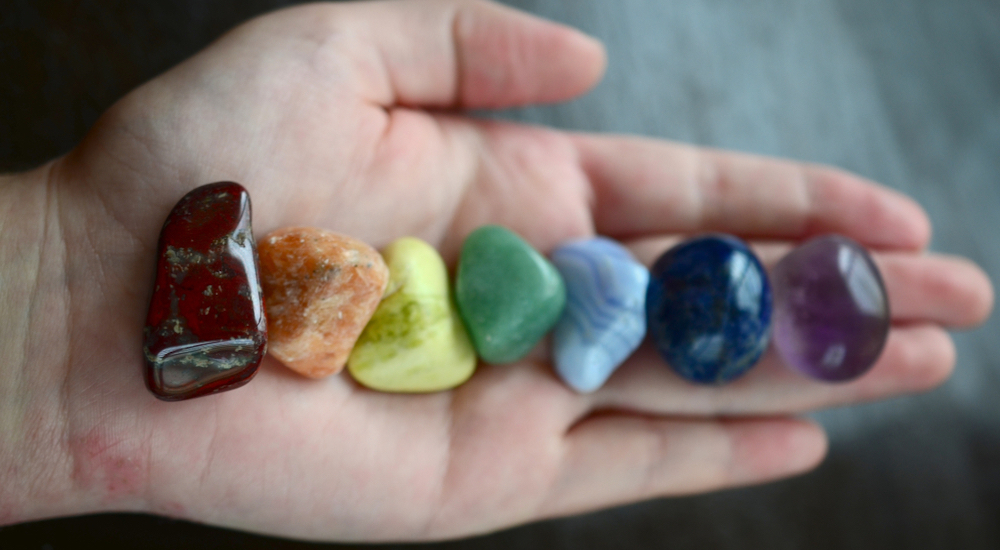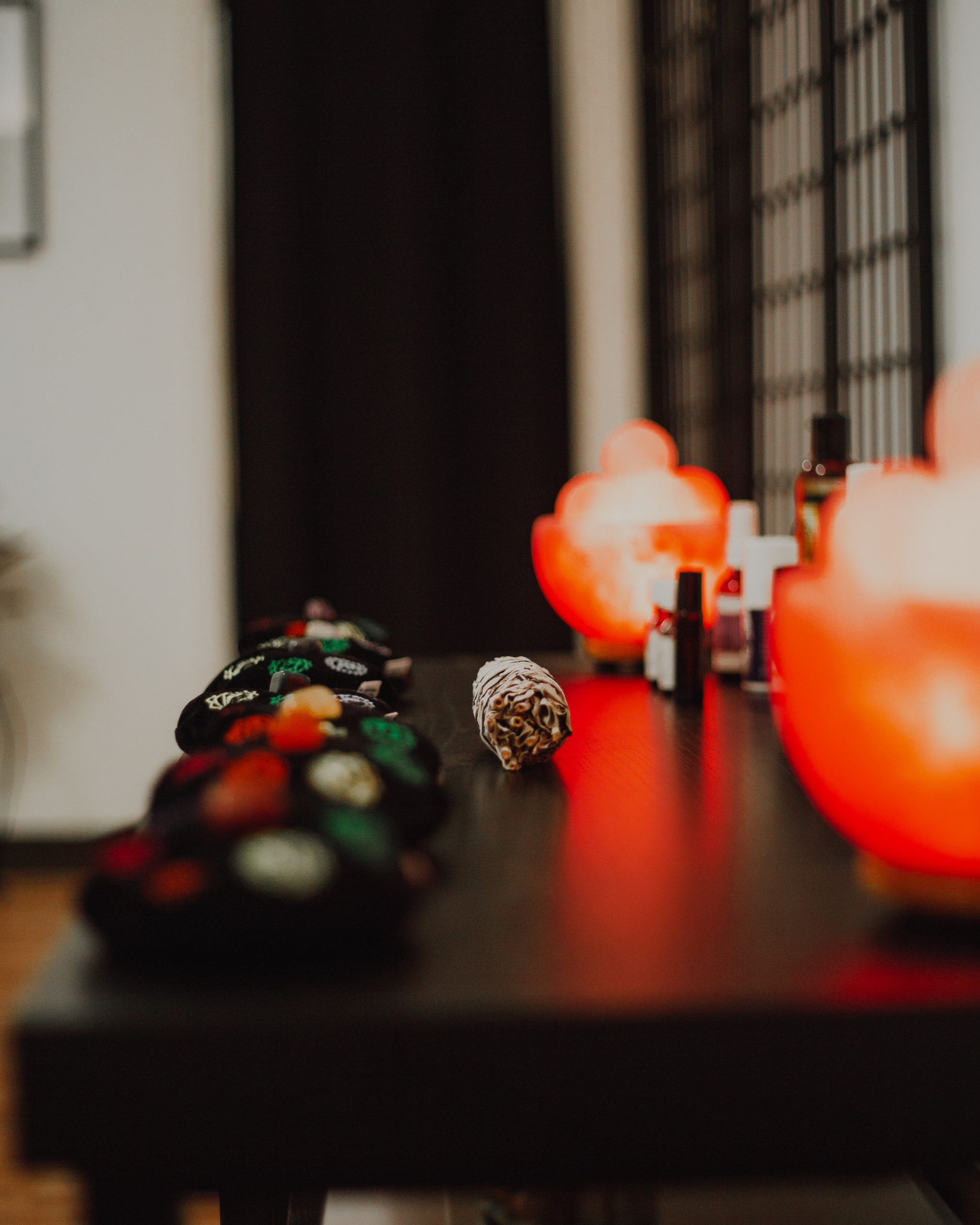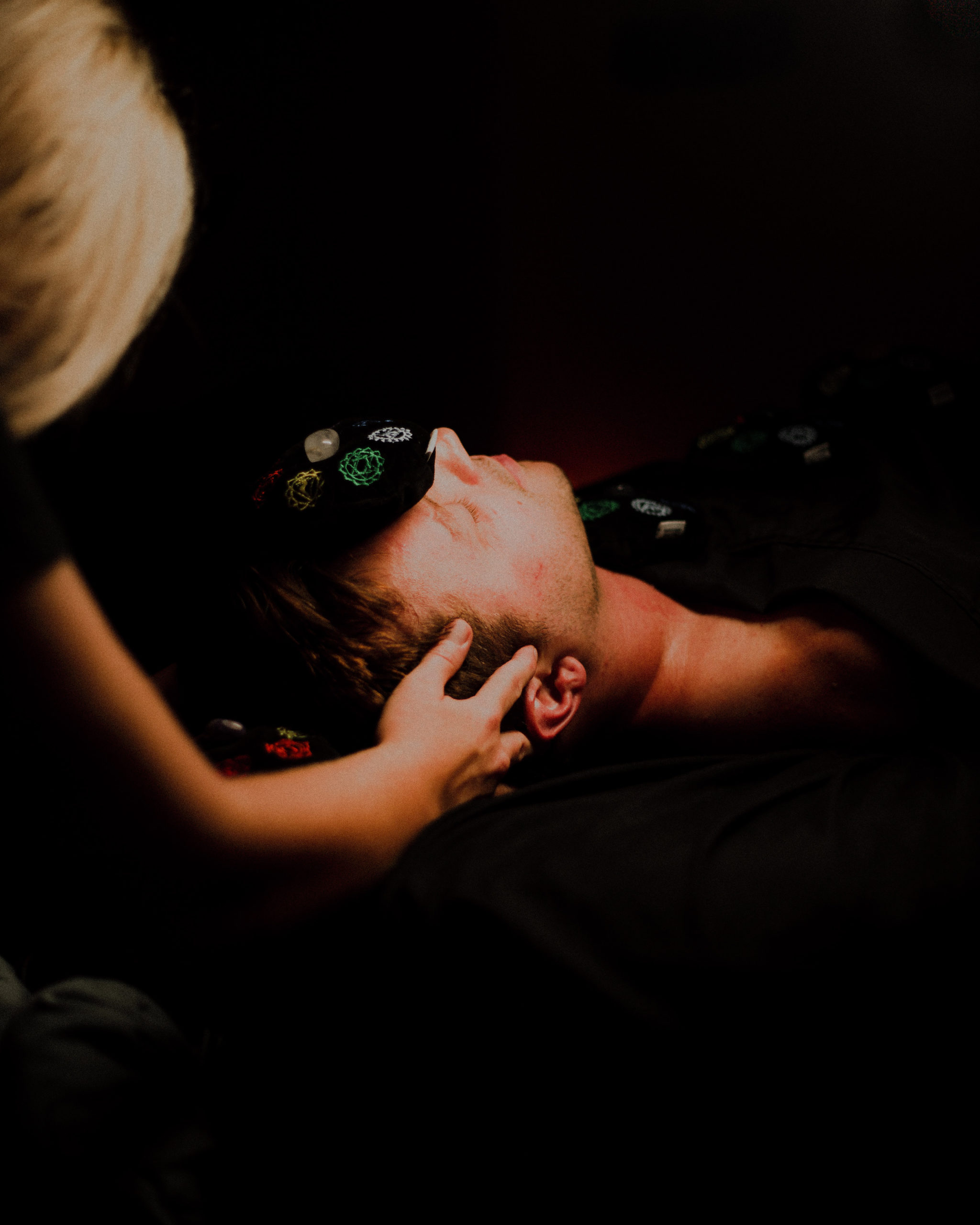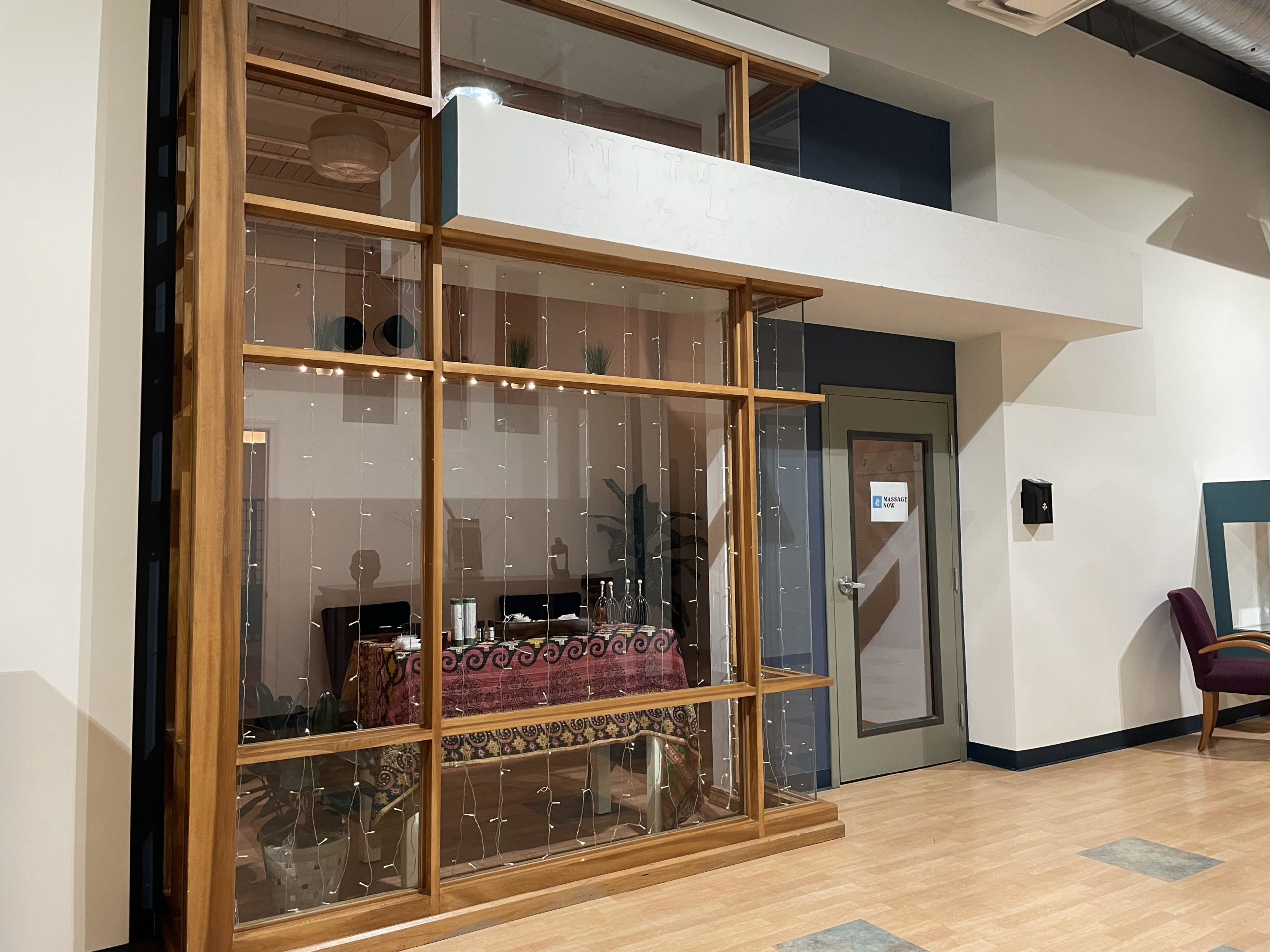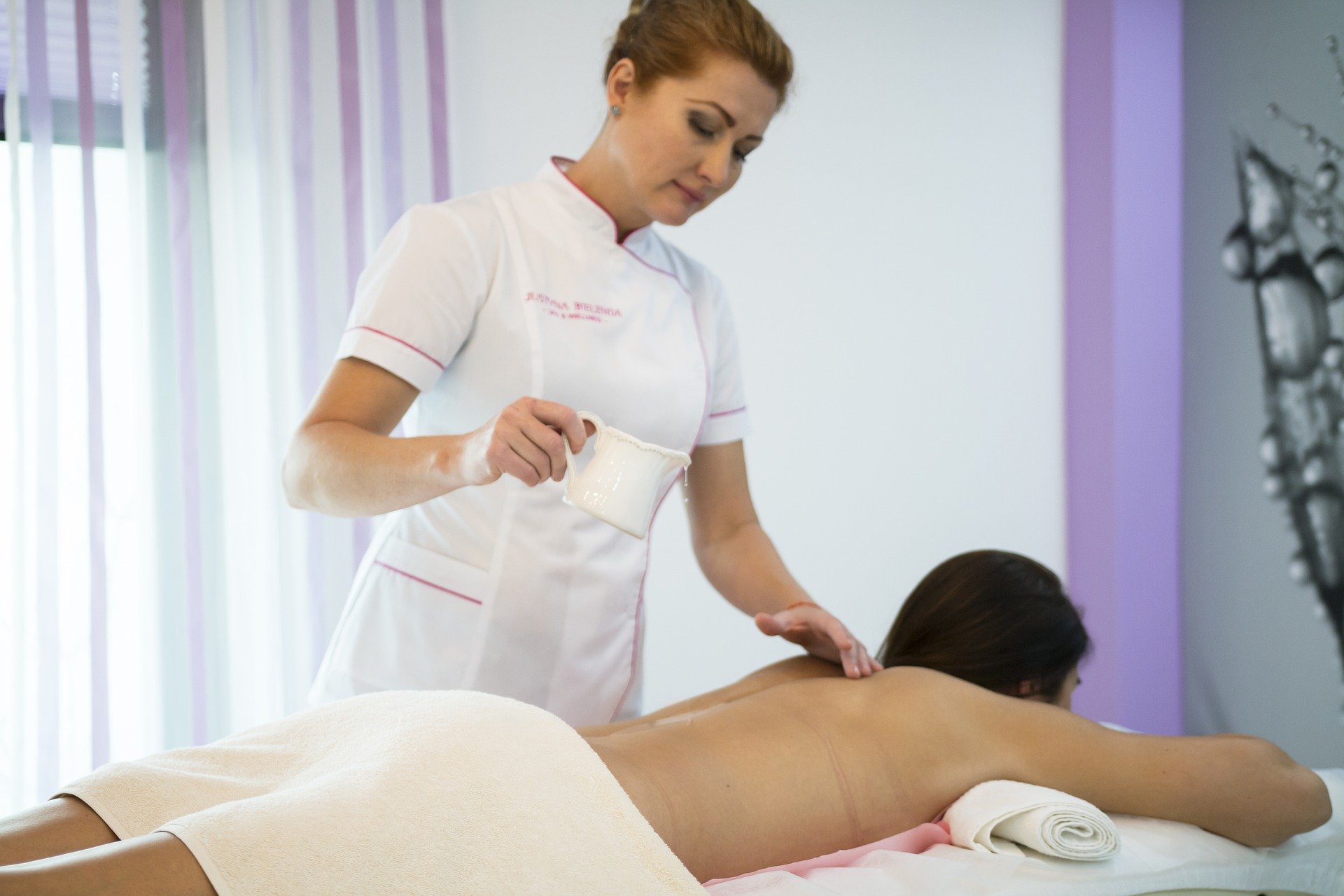Massage Therapy Benefits for Women
With March celebrating Women’s History Month, we want to pay homage to the wives, mothers, sisters, and all female-identifying persons by discussing the benefits of massage for women’s health.
As a women-owned and operated business, it’s our top priority to educate our current and future clients on the benefits of massage therapy for their physical and mental well-being.
Female bodies undergo changes from girlhood to elder—menstruation, pregnancy, post-pregnancy, and menopause. Besides physiological challenges, women are more likely to experience anxiety and depression due to extreme societal pressures.
Let’s dive into why massage therapy can benefit women’s health!
Top 7 Benefits of Massage Therapy for Women’s Health
You’ve likely heard that massage boosts blood flow, relaxes muscles, improves posture, and alleviates stress. But massage therapy has positive and immediate benefits for women and people with menstrual cycles.
Massage Eases PMS Symptoms
PMS - premenstrual syndrome - refers to the disruptive symptoms that often happen a week or two before menstruation.
During this phase of our monthly cycle, our changing hormone levels lead to a range of health-related issues.
PMS symptoms include:
- Increased anxiety and depression
- Mood swings and irritability
- Cramps
- Headaches and migraines
- Insomnia and fatigue
- Difficulty concentrating
- Joint and muscle pain
- Bloating and digestive upset
While the symptom list is long, and women experience this on a sliding scale of severity, massage therapy can help. How? By increasing mood-boosting brain chemicals (e.g., endorphins), relieving stress and anxiety, and reducing cramps and other pains.
Massage Therapy Reduces Stress and Anxiety
Every human feels stress, but according to the American Psychological Association, women experience stress at much higher rates than men. We’re more likely to experience the physical symptoms of stress, anxiety, and depression too.
Massage reduces stress by calming our fight-or-flight response (aka our sympathetic nervous system) through the therapeutic touch. Massage can even lower heart rate, calm breathing, decrease stress hormones, and temporarily reduce blood pressure which are common physiological symptoms of stress.
Massage Therapy Relieves Period Cramps
Over 80% of women experience period pain, and nearly 10% experience menstrual pain so strong that it affects their daily life.
One study found that massage therapy reduces menstrual pain, especially for those with endometriosis. This study also found that massage can be more beneficial than over-the-counter painkillers.
Massage Therapy Improves Well-Being During Pregnancy
For those experiencing pregnancy, creating an entire human can be hard on your body. For this reason, some women choose to get regular prenatal massages to boost their health.
Prenatal massages help:
- Decrease back and leg pain
- Improve mood
- Ease depression
- Combat insomnia
When booking a prenatal massage, ensure your massage therapist is trained to work with pregnant clients. Using the correct techniques, they will know how to provide a soothing and safe experience.
Massage Therapy Supports Postpartum Health
So much of a mother’s time is spent caring for their newborn baby, but it’s also vital to incorporate self-care during those first several months. Be sure to get cleared by your OBGYN – typically, three months postpartum is okay – before getting a massage.
Postpartum massage offers plenty of health benefits to new mothers:
- Reduces stress while adjusting to recent life changes
- Supports healthy circulation
- Reduces swelling after birth
- Alleviates muscle tension
- Enhances emotional well-being
Massage Therapy Boosts Well-Being for Older Women
Women begin transitioning into the menopausal stage between the ages of 45 and 55. This stage can last between 7 and 14 years and affects our bodies in many ways and with varying severity.
Menopause causes hot flashes, aches and pains, mood changes, and sleep problems. Massage therapy, especially aromatherapy massage, can help women find some relief from menopause symptoms.
Massage Therapy Improves Sleep
Women are more likely to suffer from insomnia than men due to higher stress levels and hormonal changes. Massage wards off insomnia by increasing serotonin production (the hormone in our brains that produces melatonin), allowing you to fall and stay asleep easier.
Massage Now is Here for Women
At Massage Now, we’re dedicated to showing women that self-care is essential and necessary at all stages of life. Let us know how we can help you – call or schedule an appointment online today!
Facials 101: How They Benefit Your Skin
Facials 101: How They Benefit Your Skin
Facials are relaxing and invigorating services offered by licensed estheticians. Facial services are typically stand-alone treatments that last anywhere from 30 to 90 minutes, but sometimes they’re offered as a combination service with a massage.
At Massage Now, we offer a 60 and 90-minute massage and facial services combo performed by our very own massage therapist and esthetician, Caitlin Andes.
Click here if you’d like to book a massage+facial today.
Read on if you want to learn more about facials, what they do for your skin, and what you need to know before your appointment!
What does a facial do?
A professional facial service is designed to help you relax and improve the skin on your face, neck, and decollete that can help prevent and treat common issues.
Facials can also:
- Boost collagen production
- Remove dead skin cells
- Improve the appearance of fine lines and blemishes
- Clear your pores
- Moisturize and hydrate
The end result? Glowy, healthier, younger-looking skin!
What are some of the different types of facials?
There are tons of different facials out there, each designed for a specific type of skin or concern like:
- Deep cleansing facials
- Acne prevention facials
- Anti-aging facials
- Hydrating facials
- Lymphatic drainage facials
Make sure to speak with your esthetician first to see what they offer and recommend for your skin type.
How should you prepare for a facial?
Here are our best tips to prepare for a facial, especially if this is your first time!
- It’s essential to be knowledgeable about your home skincare so that you can tell your esthetician what you’re using–this helps them avoid using something that may counteract or irritate your skin.
- Skip harsh exfoliating products about four days before your scheduled treatment.
- For men, it’s best not to shave the morning of your facial.
- We recommend rescheduling your facial service if you have a sunburn.
- Leave your jewelry at home
How do you care for your skin after a facial?
After your facial service, some minor post-treatment breakouts and irritation are possible. But these are rare.
Follow the aftercare directions your esthetician gives you following a facial. Sometimes they recommend keeping your skincare to the bare essentials–a gentle wash and moisturizer–for the next few days.
Overall, it’s best to avoid hard cleansers, exfoliates, toners, and scrubbing 48-72 hours after your treatment.
What can you expect during Massage Now’s massage and facial service?
The massage will be the first service that happens. You’ll lay on your front for the massage first, then flip to your back for the rest of the massage. Once the massage is through, the facial service begins.
Here are the steps of our facials:
- Cleansing - Our esthetician will cleanse your face and neck with a gentle cleanser using gentle, moderate strokes, which also serve as a massage! Most of the time, your skin will be prepped during your massage with warm steam.
- Exfoliating - After cleansing, your skin will be treated with a gentle exfoliator. This step helps get rid of dead skin cells and other skin impurities. This will also be washed off before proceeding to the next team.
- Face mask - A hydrating mask will then be placed on your skin using a relaxing silicone brush to ensure full coverage.
- Face massage - Our esthetician will massage your scalp, neck, and decollete while the mask sits.
- Finishing up - After the mask is washed off, the end of the facial service will be a warm towel over your face and then locking in all that incredible moisture with a hydrating lotion.
What’s next?
A facial is a treatment meant to relax and invigorate your skin and can help improve specific skin issues like acne, aging, or dry skin. There are all different types of facials, so be sure to speak with your licensed esthetician for the one that’s right for your skin.
We hope that this blog answered any questions you had regarding facials. If you live in the Wilkes-Barre/Scranton and you’re looking for the perfect place to schedule a massage and facial service, book an appointment today.
The Healing Power of Physical Touch
Massage Therapy: The Healing Power of Physical Touch
The pandemic years brought many changes to our lives. But what changed drastically was how limited we were in interacting with each other. Social distancing forced us to experience a lack of physical contact.
As a result, many of us are unknowingly experiencing something called touch starvation or touch deprivation. You might have noticed a craving for physical contact with family and friends in the last few years.
Let’s dive into the importance of touch…
The Importance of Touch
Research shows that touch is crucial to humans, both for social development and mental health.
Skin is our largest organ and has receptors that transmit feelings of positive or negative touch to our brains. From the moment we’re born, touch is the major way we interact with each other. Skin-to-skin contact is highly encouraged right after a baby is born because it boosts healthy physical and social development — skin-to-skin contact is also a powerful bonding component.
Touch starvation feels different for everyone, but the most reported symptom is a feeling of overwhelming loneliness or feeling deprived of affection.
Negative Effects of Lack of Physical Touch
- Increased feelings of anxiety or depression
- Higher levels of stress
- Feelings of loneliness
- Weight gain
- High blood pressure
- Muscle weakness
- Insomnia
Positive Effects of Physical Touch Through Professional Massage Therapy
- Increases oxytocin levels in the brain
- Feelings of relaxation
- Feelings of psychological stability
- Increases levels of serotonin and dopamine
- Reduces pain
- Supports skeletal and muscular realignment
- Promotes overall improved wellbeing
How Massage Therapy Fills the Void
With the brunt of the pandemic behind us, we’ve been able to return to some sense of normalcy. However, we don’t want to understate that the world is changed, and some may still be dealing with the lack of physical touch.
This could be for a variety of reasons, especially for those who are immunocompromised.
Massage therapy can fulfill the fundamental need for physical touch in a professional setting. Not only do licensed massage therapists adhere to strict health and sanitation protocols, but they also abide by a strict set of ethics.
Getting regular massages will encourage your body to relax by reducing tension and moving you into a calm state where healing can happen. Massage improves blood circulation and increases lymphatic flow to support a strong immune system.
Massage therapy offers a healthy, safe environment to receive the healing benefits of touch. Many people categorize massage as a luxury to pamper yourself or something only athletes need. However, many would benefit from this essential element of healthcare on a weekly, biweekly, or monthly basis.
How Often Do You Need to Get Massaged to Feel the Benefits?
Most massage therapist’s agree that a monthly massage is adequate for physical maintenance and general wellbeing. But if you can fit in regularly treatments, there’s no reason not to book a weekly massage.
Of course, if you’re experiencing an injury or working with your doctor, they may recommend more frequent visit to the massage therapist.
Massage Now is Here to Help
At Massage Now, we’re dedicated to healing not only your body, but your mind and soul. If you’re feeling touch starved, it’s okay – we live in a world where we generally keep to ourselves.
Schedule a therapeutic massage and safely experience the contact you ned in a tranquil and healing environment.
5 Common Massage Myths That Clients Have
5 Common Massage Myths That Clients Have
Did you know that massage therapy has been around for five thousand years? That’s right, the history of massage therapy dates back to 3000 BCE. So, of course, there has been plenty of time for pervading myths to come up and linger on today.
Read on to debunk the five most common myths about massage therapy that most clients ask us about…
1. Massages are all the same.
At first glance, all massages might appear the same due to the relaxing setting, scented oils, and a licensed professional using their hands, elbows, and forearms to work out the knots in your back, arms, and legs.
However, every massage therapist or massage business offers all sorts of different massages. At Massage Now we offer thirteen types of massage, including other beneficial services like facials and therapeutic cupping.
Each type of massage offers different benefits. Take a look at our services and the descriptions of each massage—all massages are relaxing, but some offer deep tissue, improved flexibility, total body rejuvenation, and more.
2. If you’re not sore the day after a massage, it didn’t “work.”
The amount of soreness you feel after a massage depends on your body and the intensity of the massage. It’s more common for people to feel sore after deep tissue manipulation, if you are on the more sensitive side, or new to massage.
A massage therapist will work on all of your major muscles group, and there may be some muscle groups you don’t usually use, which can lead to delayed onset muscle soreness (DOMS)—and it’s totally normal.
Soreness will pop up in places where you hold a lot of tension.
In the end, whether or not you feel soreness after a does not mean it wasn’t effective.
3. Massage is not safe for pregnant people.
Pregnant people can experience an abundance of benefits from massage therapy. Pregnancy is a significant life event and can be very stressful physically and mentally. Some benefits of massage while pregnant are a heightened sense of wellness, improved relaxation, and better sleep.
If you want to incorporate massage during your pregnancy, it is crucial to seek out a massage therapist who is experienced in prenatal massage.
Here are some guidelines to follow:
- The American Pregnancy Association says you can get a massage at any time during your pregnancy, but please consult with your doctor and your massage therapist.
- If you are considered a high-risk pregnancy—uncontrolled high blood pressure, preeclampsia, etc.—talk to your doctor first.
- Make sure your massage therapist specializes in prenatal massage.
4. You must drink water after a massage.
Many massage therapists will tell you to drink water after your massage in order to flush out ‘the toxins released during the massage.’ If your kidneys and liver are functioning normally, they’ll do that work for you—a healthy body does not need help to rid itself of anything, especially toxins.
It’s important to stay hydrated throughout the day but especially prior to your massage appointment. Drinking water before your massage will prevent any muscle soreness.
5. Massage flushes out toxins and cleanses the body.
Massage therapy has plenty of benefits but flushing out toxins in your body is not one of them.
The many benefits of massage include:
- Reducing stress, heart rate, and blood pressure
- Decreasing muscle soreness and joint pain
- Increases endorphins and immune function
Merriam-Webster defines a toxin as “a poisonous substance that is a specific product of the metabolic activities of a living organism and is usually very unstable, notably toxic when introduced into the tissues, and typically capable of inducing antibody formation.”
Toxins mainly get into the body through ingestion, injection, inhalation, or absorption. Luckily, the human body has five organs that process toxins and waste: the skin, lungs, kidneys, liver, and intestines. And the body expels them in three ways:
- Catabolic waste – this is why we need to stay hydrated.
- Metabolic waste – this is why we exhale.
- Digestive waste – this is why we have regular bowel movements.
Toxins and waste leave the body with or without a massage.
Want to come debunk these myths yourself? Book a massage today, or give us a call! We’re always happy to answer questions and discuss our services.
Burning Sage During Your Massage Can Help Cleanse Your Energy. Here’s How.
Eat healthy foods, get enough sleep, drink lots of water, exercise.
Most of us know the basics of good physical health, but we aren’t always as good about taking care of our emotional, mental, and spiritual health.
People have been burning fragrant herbs for purification, enlightenment, and healing for a long time. Incense burners have been dated back as far as 4500 years ago in Egypt’s 5th Dynasty.
Did you know that burning sage comes with a long list of physical and spiritual benefits? When combined with other healing practices such as meditation and massage, it becomes even more powerful.
What is Sage?
Sage is an evergreen shrub in the mint family. It has a long history that can be traced back to ancient times. The Romans used it to improve digestion and treat ulcers, sore throats, and wounds. The French brewed sage into a tea, which became popular in China and exploded a sage trade.
White sage (Salvia apiana), which is the most common type used in smoke cleansing rituals, is native to the southwestern United States and northwestern Mexico, and the Native Americans considered it to be a sacred herb.
The practice of burning sage and other medicinal herbs is known as “smudging” among many Native American tribes. There has been increasing pressure for non-Native users to call it “smoke cleansing” to avoid cultural appropriation of a tradition outlawed and practiced in secret until the 1978 American Indian Religious Freedom Act.
What Does Cleansing Energy Mean?
“Energy” comes in many forms. Our bodies are powerhouses that rely on food, drink, and sleep to break down energy in our digestive system and transform it into new, usable sources of energy.
When we talk about positive and negative energies, we’re focusing more on spiritual energy. Everything is in a constant state of vibration, even objects. Some people, like those with empathic traits, are more in tune with this spiritual energy. Other people might just notice that something feels “off” without pinpointing exactly what’s wrong.
Many problems occur when your vibrations aren’t in harmony. For example, your natural energy flow is clouded by personal negativity, such as stress, resentment, anger, frustration, etc. Or you’ve been exposed to a lot of bad energy from the people around you, and it’s affected your energy.
Cleansing energy gives you a reset. It clears away the negative energy affecting your wellbeing and helps realign your chakras so your usual, positive energy can flow again.
Why Would You Burn Sage During Your Massage?
There are different types of massages, such as Swedish massage therapy, Lomi Lomi, hot stone, et cetera.
While each type differs in specific techniques and health goals, massages generally improve circulation, reduce pain, promote relaxation, and boost your mood.
The massage focuses on physically manipulating your body into an optimal state. Of course, this comes with inherent spiritual benefits too, but burning sage simultaneously targets your spiritual energy while the massage therapist works on your body.
Realigning both your physical and spiritual wellbeing is essential to unlocking the benefits of a massage fully.
However, if you’re sensitive to smoke, be sure to communicate this to the massage therapist right away. An alternative method of cleansing energy, such as using crystals or aromatherapy, may be used instead.
Why Do You Want to Cleanse Your Energy?
Accumulating negative energy takes a toll on our mental, emotional, and physical health.
Bad energy can cause stress, impacting your immune system, hormone balance, digestive system, and heart. Your sleep quality is poor, and you find yourself in a constant bad mood, which in turn affects those around you.
Burning sage isn’t an instant cure, but it’s a step in the right direction toward self-care and restoring pure, positive energy into your life.
Benefits of Burning Sage During Your Massage
- Purification: Traditionally, sage has been used to purify people and spaces. Medicinal smokes have antimicrobial and antibacterial properties, and they also repel insects. Burning sage during your massage creates a safe, sacred place for your body and spirit to heal.
- Dispel Negative Energy: Part of the spiritual healing process requires the negative energy to be removed so it can be replaced with positive energy. As sage dispels the bad energy, your massage therapist works on improving your body’s circulation so your normal energy flow can resume.
- Improve Mood: Your emotional health is an important part of massage therapy. While the therapy itself is a treatment to boost your mood, sage can help you get there faster, making massage therapy more effective.
- Reduce Stress: Sage and massage therapy both reduce stress on their own, but together, they make a bigger impact.
- Boost Cognition: More studies need to be done on sage smoke, but the medicinal compounds of sage extract have been shown to improve brain health and memory.
Sage and massage therapy are alike in that they strive to improve your physical, mental, emotional, and spiritual wellbeing.
When combined, they become even more powerful, playing off each other’s strengths. Burning sage creates a safe, purified place and removes the negativity and toxicity you may have brought with you from the outside world.
As the negative energy is alleviated, your body becomes more susceptible to the massage therapist’s efforts to promote health and healing.
Are you ready to experience the benefits of sage smoke cleansing and massage therapy? Contact us to learn more about our services.
Crystal Healing Combined with Massage Therapy: Why Should You Try It?
When you think of massage therapy, you probably conjure a mental image of practiced hands working knots out of tight muscles. Maybe you also think of soothing music, essential oils, and incense.
Do healing crystals also come to mind?
Although not popularly associated with one another, crystal healing and massage therapy are a powerful combination against negative energy, stress, muscle pain, and other ailments.
What is Crystal Healing?
Crystals are minerals that have atoms in a highly ordered repeating pattern. Most crystals form organically due to geological processes.
Humans have used crystals for thousands of years, dating all the way back to the ancient Sumerians.
In holistic medicine, crystals have powerful healing energy due to their vibration frequencies. They help us release negative energy, rebalance our chakras, and reset the electrical currents and energy flow in our bodies.
How Can Crystal Healing Be Used During a Massage?
Massage therapists rely on natural tools to amplify the healing effect of the ancient techniques on your body. This can include hot stones, Himalayan salt, essential oils, cups, and, of course, crystals.
Using healing crystals before, during, and after a massage helps to amplify the positive effects of the session.
1. Before the Massage
It’s important to prepare the body for a cleanse. Meditation and breathing exercises with crystals will open your chakras to be detoxed and realigned as the body relaxes during the massage.
Grounding crystals associated with the root chakra are best for pre-massage relaxation.
2. During the Massage
Your massage therapist may use crystals in different ways, depending on the massage. The most common uses of crystal healing and massage therapy include:
- Placing a crystal directly on each chakra center to realign the energy flow while the therapist massages your body
- Arranging crystals around your body to cleanse the energy field and prevent negative energy from entering the space
- Massaging high-tension areas with tumbled stones or a crystal massage wand
- Using crystal beads or small tumbled stones and water for a foot and palm massage
3. After the Massage
Using the healing power of crystals after the massage can help to maximize the benefits and prolong your feeling of relaxation and good health.
Just as you did with pre-massage crystal prep work, sit with grounding crystals, close your eyes, and focus on your breath and body. Pay attention to how you feel now that your body is recharged and refreshed and your energy is back into alignment and flowing correctly.
Taking this extra time with grounding crystals helps to fix those alignments into place and attract more positive energy. You’ll enjoy the benefits of your crystal massage longer when you take a moment to notice and appreciate the harmony of your mind, body, and spirit.
What Crystals Are Used During the Massage?
Each crystal has specific healing properties. Some excel at detoxing the body, while others are masters of resetting your energy field or restoring balance.
A massage therapist may use a preselected set of crystals designed to target all of the chakras for total realignment, or s/he may tailor the crystal selection to best serve the client’s specific needs based on mental, emotional, and physical issues.
The crystals most commonly associated with healing and detoxification include:
- Amethyst (Third Eye Chakra): One of the most popular healing and balancing crystals that foster equilibrium.
- Aventurine (Heart Chakra): A stone that is known for promoting mental and emotional healing properties.
- Black Tourmaline (Root Chakra): A powerful healing crystal that absorbs and neutralizes negative energy to cleanse the body.
- Citrine (Solar Plexus Chakra): Also called the “light maker” crystal, promotes positive energy and recharges the energy field.
- Clear Quartz (Crown Chakra): The ultimate healing crystal, highly versatile when it comes to purifying negative energy.
- Hematite (Root Chakra): A grounding crystal that helps to detox the body and make us feel stable and grounded.
- Rose Quartz (Heart Chakra): Known as the crystal of love, rose quartz helps to heal the heart from negativity caused by relationship stress, including romance, friendships, family, and even self-love.
- Sodalite (Throat Chakra): A wonderful anti-stress crystal that excels at promoting calmness and relaxation to restore balance.
- Tiger’s Eye (Sacral Chakra): A stone of protection, good fortune, mental clarity, and focus.
Any one of these crystals can be a powerful healing companion to the skills and expertise of your massage therapist.
It’s always important to have an open conversation and convey any pain, stress, and frustration before the massage begins so your therapist can select the crystal(s) best suited to help you.
All of the crystals on this list are good at healing, but their properties and vibration frequencies work in different ways. You may already know which crystals resonate best with your energy – but if not, that’s okay. Trust your massage therapist to select the right crystals to maximize the healing effect of the massage.
Just as you take care of your vehicle with oil changes and tire rotations, your body also needs regular tune-ups to keep functioning at maximum efficiency.
But we’re more complex than a car. Our ailments often go deeper than the mechanical issues in our muscles, joints, and nerves. Our spiritual energy needs attention, too. This is why combining crystal healing and massage therapy produces such powerful results.
Considering a crystal massage? Give us a call! We’re always happy to answer questions and discuss our services to determine the best type of massage for your individual needs.
What is Aromatherapy and How Does It Benefit Your Massage?
Aromatherapy has a wide list of applications. It’s often used to boost mood, relax and destress, manage pain, and alleviate anxiety and depression, among other uses.
Massage therapy can incorporate aromatherapy as an enhancement to the session. Since the two easily work together to intensify each other’s benefits, aromatherapy massage has become a common practice.
If you’re wondering what aromatherapy massage is and whether you should give it a try, read on to learn about the process and benefits.
What is Aromatherapy?
Aromatherapy uses essential oils diffused into the air and/or absorbed into the skin to promote particular health benefits.
Essential oils are highly concentrated extracts from particular plants’ flowers, bark, leaves, or fruit.
There are generally few risks involved with aromatherapy in humans, although certain essential oils are toxic to dogs and cats. If you’re planning to use aromatherapy at home and have a fur baby, contact your veterinarian to confirm which essential oils are safe.
For humans, the biggest concern is sensitivity to essential oil, which may lead to skin irritation or an allergic reaction. So, if you’re getting a prenatal massage, be sure to get medical advice from your doctor before exposing your body to essential oils. Also, tell your massage therapist before the session begins if you have a history of allergic reactions, skin sensitivities, or other health concerns related to essential oils.
How Does Aromatherapy Work in the Body?
Aromatherapy stimulates smell receptors that send positive messages through the nervous system and into the limbic system, which is the part of the brain that regulates emotions, behaviors, and memories.
When applied directly to the skin, some of the plant chemicals are absorbed, in addition to the fragrance effects.
Aromatherapy is a holistic healing treatment that improves both physical and emotional health. Different essential oils evoke different reactions.
The most popular essential oils used in aromatherapy include:
- Bergamot: Reduces stress and improves skin conditions such as eczema
- Cedarwood: Aids in sleep and stress, as well as inflammatory conditions such as arthritis, kidney problems, and skin issues
- Chamomile: Improves mood and promotes relaxation
- Eucalyptus: Relieves cold symptoms and stimulates the mind
- Ginger: Improves mood and libido
- Jasmine: Helps with depression, libido, and childbirth
- Lavender: Relieves stress
- Lemon: Improves mood and aids in digestion, headaches, and other physical ailments
- Orange: Reduces anxiety, improves mood, and increases energy
- Peppermint: Boosts energy and aids digestion
- Rose: Reduces anxiety and improves overall mood
- Sandalwood: Improves focus and calms the nerves
- Tea Tree: Boosts immunity and helps to fight infections
- Ylang-Ylang: Alleviates headaches and nausea
What Happens During an Aromatherapy Massage?
An aromatherapy massage is a Swedish massage therapy. It incorporates essential oils into the massage oil or lotion used when lymph nodes and deep tissues are massaged, alleviating tension, pain, and stress.
An aromatherapy massage may also include diffusing essential oils into the air to be inhaled throughout the session.
Almost every spa and massage clinic offers aromatherapy. However, the treatment, customized blends, and quality of the essential oils will vary.
1. Pre-Massage
Your massage therapist will ask you questions to determine the right blend of essential oils for your aromatherapy massage. For example, if you booked a massage to reduce stress and have some relaxation time, you’ll want a different aromatherapy blend than for dealing with chronic pain.
Depending on your needs, an essential oil blend may be put into a diffuser to maximize the benefits of aromatherapy massage.
Once the massage oil is selected and any health concerns are addressed, the massage therapist leaves the room so you can undress and position yourself on the massage table.
2. During the Massage Session
Even if your therapist isn’t using a diffuser, you’ll likely notice the aroma of essential oils in the massage oil itself once the therapist begins. If you experience any pain, skin irritation, or nausea, let your massage therapist know immediately.
3. Post-Massage
After the massage session, let your therapist know how the essential oil blend worked for you. Did it have the desired effect, or did you not really notice any change?
Based on your needs and health goals, your massage therapist may recommend essential oils and special blends that you can use at home between massage appointments.
What are the Benefits of an Aromatherapy Massage?
Individually, both aromatherapy and massages have a long list of physical, mental, emotional, and spiritual benefits. Studies on aromatherapy have demonstrated benefits for:
- Anxiety
- Depression
- Insomnia
- Menstrual Cramps
- Mood
- Nausea
- Pain
- Sleep
- Stress
When combined with the powerful relaxation and maintenance benefits of different types of massages, the two holistic practices complement each other to boost their overall effectiveness.
You can expect to achieve a greater level of relaxation, mood enhancement, pain relief, et cetera by adding aromatherapy into your massage therapy.
There are very few risks or downsides to aromatherapy massage. A knowledgeable and skilled massage therapist will customize the right blend to suit your specific needs and health goals. You can even add CBD oil to your aromatherapy massage for yet another boost.
Ready to give it a try? Please contact us to schedule an appointment for an aromatherapy massage.
Top Benefits of Massage Therapy for Young Athletes
Student-athletes may have the benefits of youth on their side, but that doesn’t mean they are protected from sports-related injuries, pain, and discomfort.
The increasingly competitive nature of youth sports paired with long seasons and intense conditioning and training can leave young athletes vulnerable to muscle tension and injury.
Much like their adult counterparts, youth athletes can find relief, protection, and improvement through massage therapy.
What are the benefits of massage therapy for young athletes?
For athletes of any age, the benefits of massage therapy can be viewed in three ways: relief from injury, muscle conditioning, and reduced stress. Let’s further break down each benefit.
Injury and Pain Management
If your child is suffering from a muscle-related injury, massage therapy can aid in the healing process. Increased circulation and decreased muscle tension can expedite the healing process, relieving pain and allowing them to return to the field or court quicker.
Increased Flexibility and Range of Motion
When practiced regularly, massage therapy can help enhance their athletic performance and may even decrease the likelihood that they’ll suffer from common muscle-related injuries, like sprains and strains.
That’s because regular massage therapy can decrease muscle tension while also increasing flexibility and range of motion.
Decreased stress and anxiety
The benefits of massage therapy for young athletes aren’t limited to on-the-field growth and enhancement, however. Young athletes can also experience the same benefits of massage therapy as adults, including decreased anxiety. This can be a valuable benefit for athletes that are often under pressure both on and off the field.
Do massages improve athletic performance?
Because regular massage therapy can result in more flexibility, an increased range of motion, and less muscle pain and tension massage therapy can directly improve athletic performance.
Massage therapy may also improve healing and, since it provides improved flexibility, expedite injury recovery or prevent injuries from occurring in the first place.
What type of massage is best for young athletes?
Young athletes who turn to massage therapy as part of their conditioning or as a form of injury management will likely find the most value in a deep tissue massage. This type of massage focuses on the musculoskeletal system and is the number one choice for treating sports-related injuries or concerns.
Keep in mind, however, that massage services vary, and you may find that the massage therapist of your choice offers a sports-specific massage service designed specifically with athletes in mind.
If you’re not sure which option is best, always contact the massage center for more details. A good massage therapist will be able to field your questions and guide you and your child towards the best service option.
How often should an athlete get a massage?
Like adult athletes, young athletes benefit from regular massage therapy scheduled weekly or biweekly. This is particularly true during the sports season or while engaging in intense training and conditioning.
By scheduling weekly or biweekly massages, student-athletes are more likely to reach peak performance while also decreasing the risk of injuries that occur due to tight muscles, a lack of flexibility, or a limited range of motion.
How do you prepare your child for a sports massage?
For some adults, their first massage can be somewhat anxiety-inducing, especially if they don’t know what to expect. Young athletes can have a similar reaction to their first massage, causing them to become anxious or unsure about what to expect.
Preparing your child for their first sports massage can ease their anxiety and make the experience more effective and enjoyable.
Before your child goes for their first massage, walk them through the process and tell them what to expect. If you’re not sure, consider contacting the massage therapist who will administer the massage. They should be more than happy to speak to you and your child about what to expect.
In addition, it’s also a good idea to remind your child that they are in control of their body and that they have the power to control the experience by informing the therapist of any boundaries they may have both before and during the massage.
Finally, though not always required, many parents choose to stay in the room during the massage to provide an additional layer of comfort for their child.
There are many reasons why you may want to consider incorporating massage therapy into your child’s sports conditioning. Not only can massage therapy provide relief from sport-related injuries, but it can also improve flexibility and range of motion, leading to improved performance on the field.
Not sure if massage therapy is right for your child or have other questions regarding the benefits of massage for young athletes? Contact us below so we can answer your questions and schedule your athlete’s first session.
What Is ‘Energy Work’ In Regards to Massage Therapy?
Are you someone who holds a lot of tension inside you? Maybe you don’t even realize it until a physical or emotional part of you gives you some indication that something isn’t right.
You may be struggling with personal issues, career troubles, or anything life otherwise throws at you.
This doesn’t mean you have to go at it alone, though. Therapists are always a good option for healing – but what if the healing you require is more spiritual in nature? You want to be given the ability to heal, and let go of what is holding you back.
If you’re looking for somewhere to help take that negative energy away, Massage Now is the place for you. We provide services to soothe, relax, and heal you. One of the services we offer is “energy work.”
Now, you may be wondering, what is energy work? We're here to explain and guide you toward becoming a better and healthier you.
What Is Energy Work in Terms of Massage?
Energy healing has often been seen as a new and somewhat unexplained theory. Fortunately, the technique is so simple that it’s been used as an effective bodywork method for centuries.
Energy work can be described as promoting, restoring, and maintaining health and wellness by supporting the body’s spiritual needs. It uses positive energy to promote healing in your body, heart, mind, and spirit.
There is a flow of energy that exists in your body through various currents and energy fields around the body (the aura). When the currents become disrupted, the flow is blocked. If allowed to continue for long periods of time, this blockage can create discomfort and even disease within the body.
When you address the imbalance in your body and the root of the problem, you can release the blockage and your health will return. The body, heart, mind, and spirit are all connected, and each one influences one another. If there is an imbalance in one, chances are that issues will appear in another. Emotional problems in the body can lead to physical problems and vice versa.
Energy work is a valuable tool to achieve good health, and can function as:
- Preventative maintenance
- A holistic approach to addressing imbalance or disease
- Complimentary for allopathic medical care
What Is an Energy Healing Massage?
By using both hands-on and hands-off healing techniques, massage therapists are able to manipulate the natural energies in your body with the intention to create stability and restore emotional, physical, and spiritual health.
This technique can be viewed as a healing session, as it does more than just provide physical relief.
Healing sessions often:
1. Free Up Your Mind
You fill your mind up with negative thoughts throughout your life. Though they are not always an accurate reflection of yourself, they continue to stay with you. Energy healing in massage helps loosen the roots of those stories within you, giving you more room in your mind for positive thoughts.
2. Address the Emotional Body
While traditional massage therapists focus on just the physical body and healing the pain that exists there, many forget about the inner pain. Physical wounds can also be accompanied by emotional wounds. Through energy work, those emotional wounds become a priority and begin to heal.
3. Tune Into You On a Deeper Level
Regular massages create a bond through only physical touch. When using energy healing, you're able to connect with your massage therapist through intuition. This requires the energy healer to locate pain that must be felt rather than seen.
4. Work with Greater, More Divine Healing Power
An energy healing massage works toward healing all aspects of you, not just through physical and emotional relief, but also by getting you in touch with your spiritual needs. This can allow you to be aided by the Divine toward a transcendent experience.
5. See Yourself with Greater Clarity
When you undergo an energy healing massage and release what is no longer any good for you, you are able to see yourself with a new perspective and engage fully in positive self-care.
There are many forms of energy work and healing, and they include:
- Reiki
- Jin Shin
- High self-resonance therapy
- Crystal healing
- Pranic healing
- Homeopathy
- Shamanic healing
- Color healing
Can a Massage Therapist Feel Your Energy?
Yes, a massage therapist can feel your energy when giving you a massage.
Clients release energy throughout the massage. You store your emotions, memories, and thoughts inside you, and massage allows them to come up and be released.
That is why massage therapists may feel fatigued when working on clients. It is not because of the overall physicality of the job – it is because they are trying to process the energy flow from their clients.
Can a Massage Affect the Energy in Your Body?
Yes, a massage can affect the energy in your body.
For example, when you’re feeling down or have negative thoughts, it can put a burden on your body. Massages help release that built-up tension, which will make you feel lighter.
If you’re someone who wants to make a change in your physical and mental health, you have come to the right place.
At Massage now, we can help you massage your way toward a stress-free and healthier life for your mind, body, and soul.
Contact us to get started today.
Independently Owned Massage Therapy Studio vs. Spa: What’s Better?
Are you someone who is looking to get a massage? Maybe you have a lot on your plate, and the stress is interfering with your day-to-day life. Or you’re an active person with a busy schedule with nowhere to plan for relaxing and taking a break.
Well, it’s about time you do something about it. When choosing where to go, the options can seem endless. There’s a spa.
Or, you could try your hands on an independently owned massage therapy studio instead.
And what better studio to choose in Pennsylvania than Massage Now? Not only do we have therapeutic massage services that soothe, relax, and heal, but we make sure that each body is taken care of.
If you’re still stuck on which to choose, keep reading to help make your final decision.
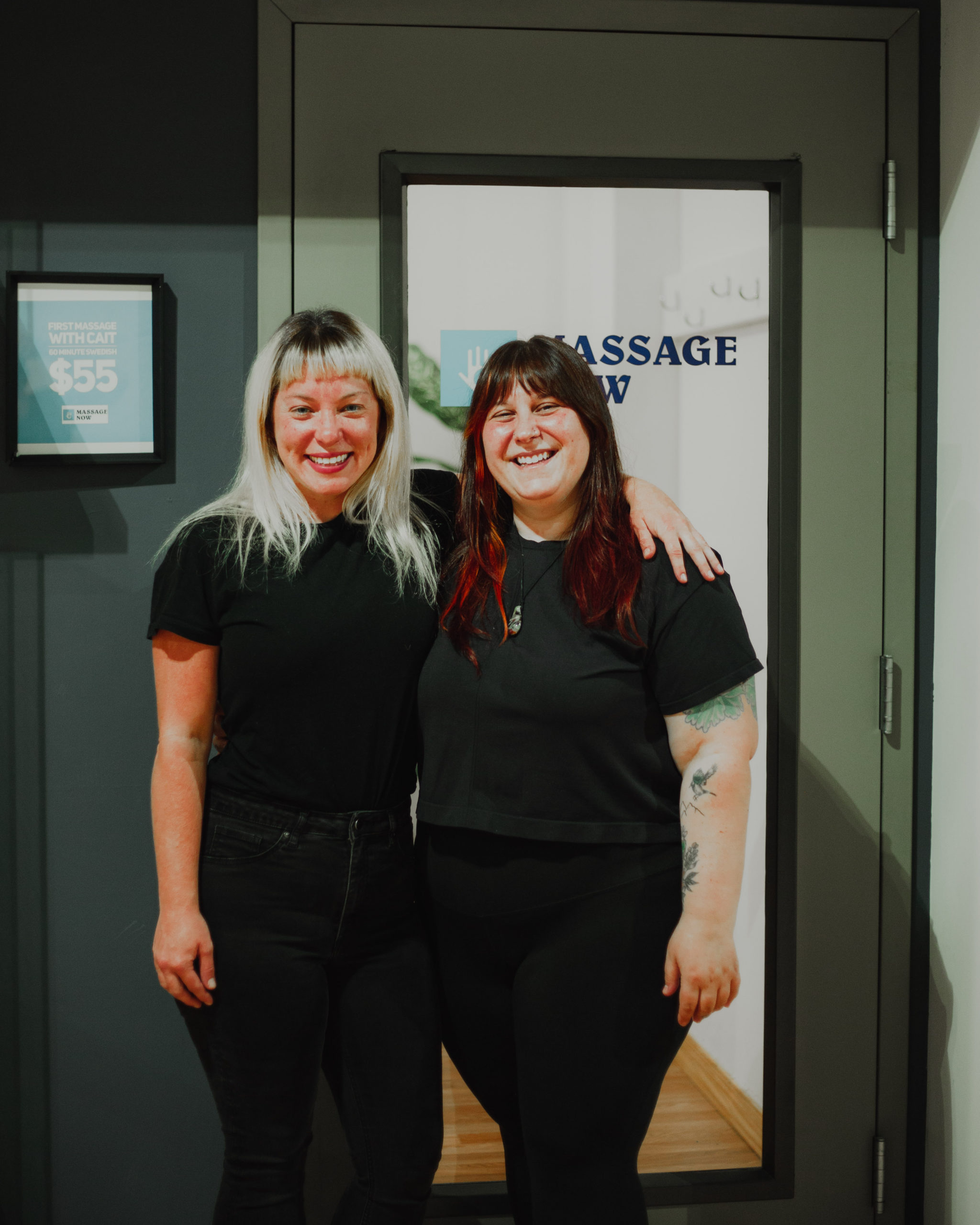
Massage Now founder Christine Mooney and massage therapist Cait Wunner
What Is an Independently Owned Massage Therapy Studio?
You know when you visit a new place, and they have their own coffee shops or hair salons that aren’t what you have or are used to seeing? They have their own trademark, unlike the popular brands and businesses you see all over the place.
Essentially, that is what it means to be independently owned and operated. You are the owner of that store. You don’t have to adhere to anyone else because it’s your small business, and you’re not below anyone else. You get to manage your daily tasks and operations of the business through yourself without having any influence through an outside person who may have an ownership or financial interest.
This is the same for independently owned massage therapy studios. You are not part of a bigger corporation of studios and therefore can make or do what fits best with you.
There are many different types of massages you can get, but at an independently owned studio can include:
- Deep tissue massage
- Swedish massage
- Hawaiian Lomi Lomi massage
- Himalayan salt massage
- Foot massage
- Hot stone massage
- Oncology comfort massage
- Pregnancy massage
- CBD massage
- Sinus and face massage
- Upper body massage
What Is a Spa?
If you’re someone who enjoys luxury every now and then, going to a spa can feel like that. Though, it wasn’t always that way.
In fact, for centuries, a spa referred to a location where people would go to enjoy healing, medicinal baths in mineral spring water or seawater.
However, spas today focus on various beauty and wellness treatments to ensure you feel and look great.
Some of the treatment’s spas provide include:
- Pedicure and foot massages
- Hot stone massages
- Pampering facial
- Scalp massage and deep conditioning treatment
- Mud mask
- Acupressure
- Exfoliation
- Body wraps
There are also different spas to best determine what’s best for your wellness and beauty goals:
- Day Spas: These are spas that don’t involve traveling or staying the night. They have an abundance of accommodations and services ranging from saunas to facials.
- Destination Spas: Many destination spas give an immersive experience as well as fitness activities and healthy living. This is for a spa getaway.
- Medical Spa: These can be supervised by a doctor. Botox and laser resurfacing take place at this type of spa.
- Resort and Hotel Spas: This is for traveling with your family or business and wants to relax, or if you’re indulging or just want to be in the great outdoors.
- Mineral and Thermal Spring Spas: Mineral and thermal springs spas use mineral-rich waters, seawater, seaweed, and other natural elements from the ocean for their treatments to provide therapeutic benefits.
Differences Between Massage Therapy Studios and Spas
When you think of massage studios and spas, you probably believe they are the same. Although they do provide some of the same treatments, there are some significant differences between them.
Spa therapy can refer to water treatment, such as a hot tub or sauna. It can also refer to wellness treatments being used as well as holistic or yoga-style classes.
Massage therapy is one of those treatments being used at the spa. There are many techniques for massages. And, they all cater to your body and tap into your mind and intuition.
While spa and massage therapy are both relaxing, spas are more for the moment, while massage therapy studios help better you for the long term.
Benefits of Using an Independently Owned Massage Therapy Studio
If you’re still on the fence about whether a spa or independently owned massage therapy studio is the right choice for you, here are some benefits to consider to make it easier:
- No Waiting: All you have to worry about is booking an appointment and we’ll do the rest.
- No Upselling of Products: Unlike most spas that try to upsell their products being used on you, that isn’t the case here.
- More Personal Feel: Spas can sometimes feel out of touch and not as inviting. With us, you’re taken care of the moment you walk in until you leave.
As you can see, choosing an independently owned and operated massage therapy studio is the way to go. You want people who will take care of your needs and make you a top priority.
At Massage Now, we make sure that happens.
To book an appointment contact us today!
